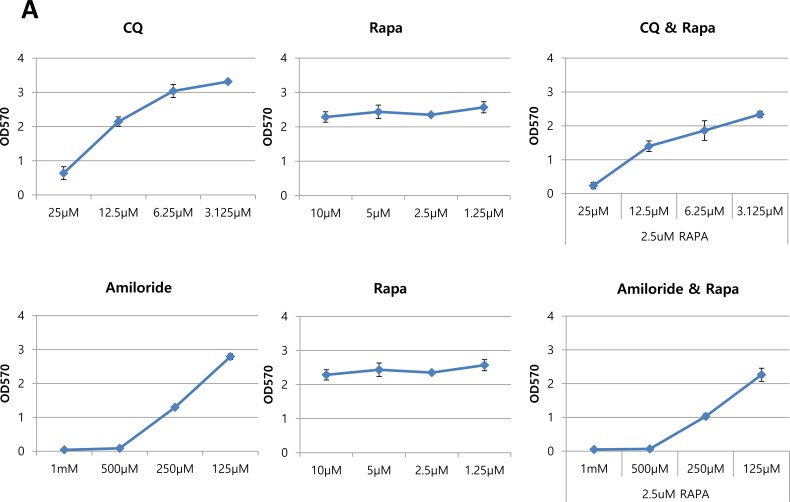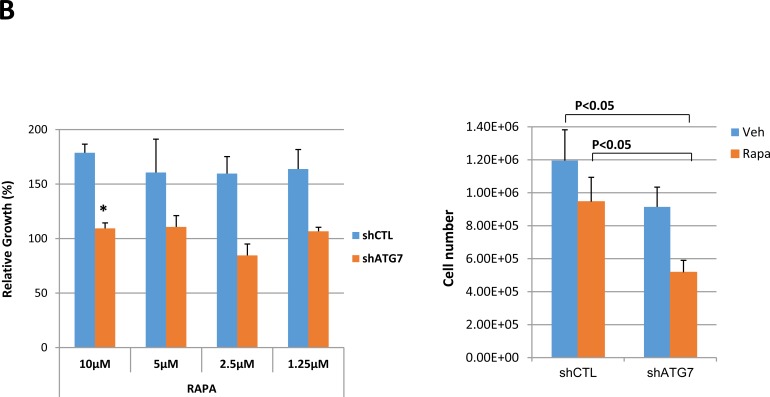Figure 6. Autophagy and macropinocytosis inhibition sensitize oncogenic Ras cells in combinatorial treatment with mTOR inhibitor.
A. MIA PaCa-2 (KRas mutant) cells were treated with the indicated concentrations of CQ, amiloride, or rapamycin alone, or two of each in combination, for 72 hours. Cellular growth was assessed using an MTT assay. B. MIA PaCa-2 cells expressing Atg7 shRNA and control shRNA were treated with the indicated concentrations of rapamycin for 48 h and cell growth was assessed using an MTT assay. Cell growth with 5 μM rapamycin treatment was monitored by cell counting in MIA PaCa-2 expressing both Atg7 shRNA and control shRNA. Relative growth is presented after normalization by number of cells under the each condition without rapamycin treatment. C. Concomitant treatment with rapamycin and CQ or rapamycin and amiloride resulted in the inhibition of tumor growth in a xenograft mouse model. Subcutaneous MIA PaCa-2-driven tumors were established in 6-week old male mice. Rapamycin (1 mg kg−1 per day), CQ (20 mg kg−1 per day), or amiloride (10 mg kg−1 per day) alone, or two of each in combination, were administered daily via intraperitoneal injection. Tumor growth was assessed once tumor volume reached 150 mm3. Data are shown as the mean of five mice in each group +/−SEM. *p < 0.05. Statistical significance was determined via a student's t-test.



